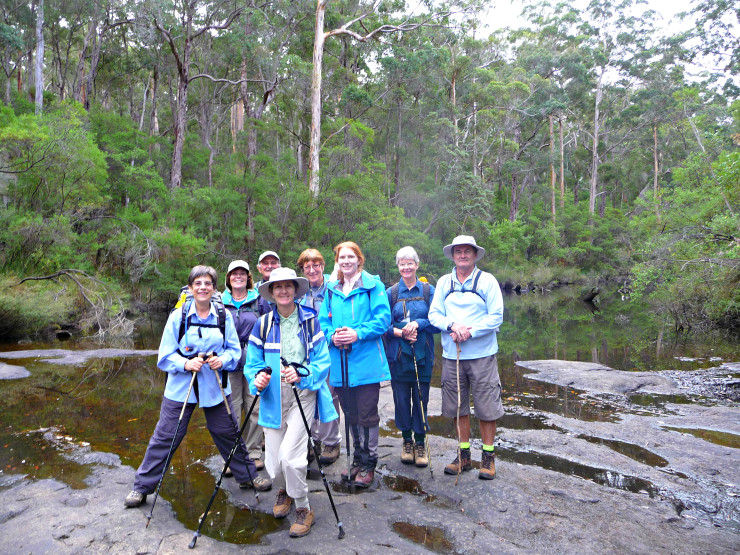Bushwalking Safety Tips – Ensure you make it home, on time and happy

Bushwalking Safety Tips – Ensure you make it home, on time and happy
Posted on
Chances are if you’re reading this, I bet you have been walking for a long time! For about 1 million years now we humans (I assume not many cats read our hiking blog) have been getting around thanks to bipedal power. Walking is not only a natural and safe thing to do, but thankfully a very enjoyable activity as well.
Now, bushwalking is not base jumping, we’re unlikely to suffer really serious injuries. However, that doesn’t mean there aren’t risk involved. We hikers are generally not content to be walking around hospital car parks… “Hi Dr Hoffman, yes just going for a hike around the ER building again!”
No, hikers generally seek out experiences in nature away from Dr Hoffman and his team. The truth is that relatively minor injuries or sicknesses can have a whole range of consequences when we are out in the bush away from definitive care. Hopefully that didn’t scare you into a lifetime of couch potatoing (sure, potatoes can be a verb) because there are some really simple things you can do to ensure that your next hiking adventure is not only safe, but enjoyable. So, please enjoy our..
Bushwalking Safety Tips:
1. Know thyself and know thy trail: I imagine that is how Confucius would have said it… But ancient Chinese philosophers aside, this is an important rule for hiking. You have to know what your body is capable of, and have a good idea of what’s in store for you on the trail.
Remember, walking the dog on a footpath is not the same as walking the Overland Track. Knees that felt fine on asphalt can go dicky walking over rocks. Hips that could make “Rover” heal may not get you to the end of the Cape to Cape.
We find that it is not people’s fitness that lets them down, rather they are just not prepared for old injuries to flair up.
If you are going to be walking over uneven ground and you haven’t done so for a while, take some time to look after old injuries. Stretches, strapping, strength exercises.
2. Take essential safety equipment: Nobody likes to look like a Teenage Mutant Ninja Turtle on the trails, however these are the absolutely non negotiable when it comes to any hike of over 4 hours. If you can’t fit these in your pack, you need a bigger pack!
– A map which shows not only the trail, but the surrounding area.
– A first aid kit tailored to the area you are walking. In Australia, we recommend as a start: plenty of gauze, compression bandages (which have lots of different uses) anti histamine as well as your favourite electrolyte.
– Plenty of water. Okay, I know it gets cold in Australia, but for the main part this is a warm and dry continent and you are going to need plenty of water. People lose about a litre a day just from breathing! If it’s in the 30’s you are going to lose up to a litre each hour. One of those little bottles from the airplane is definitely not enough.
– A mobile phone and a list of contact numbers. Seriously, why wouldn’t you take a mobile phone? You don’t have to turn it on. Most phones these days can double for a torch as well.
– A pen. Mightier, lighter and way more useful than a sword when bushwalking.
3. Key, Communication is: That was my poor attempt at irony not a Yoda impersonation. Communication is key doesn’t mean you need to rush out to grab a satellite phone. Communication starts before you start walking. Let someone know where you are going and when you intend to return. Also, it’s not good enough to carry a mobile phone. You need to know who to call!
When out on the trail, if you are going off the trail to undrink, let someone know.
BONUS BUSHWALKING SAFETY TIP: If you are going off track to go to the loo, leave your backpack on the track. It not only provides a point of reference for a rescuer if you get lost, but it will also announce to other walkers coming up the trail that someone may need a bit of privacy!
4. Keep an eye out on the weather forecast and know how things can change: This goes hand in hand with the first point. Some trails are fine in any weather and some can be treacherous! Consider shade, slipperiness, as well as cliff tops (wind), river crossings (swell) and visibility (fog).
Remember the higher up you are, the quicker the weather can change. Unless you live in Melbourne, in which case the weather seems to change every 7 minutes!
5. Don’t rush: Whether you’re planning the walk, packing your bag, or coming down the mountain. Brains work much better when they are relaxed and working to a plan.
All of this stuff is easy! And everyone loves a list… lists give us confidence because we can tick them off and move on. Hopefully our Bushwalking Safety Tips give you the confidence to get out there and enjoy the wonderful trails that Australia has to offer. If you have any other suggestions, please leave them in the comments below.
Happy trails,
Team IO



